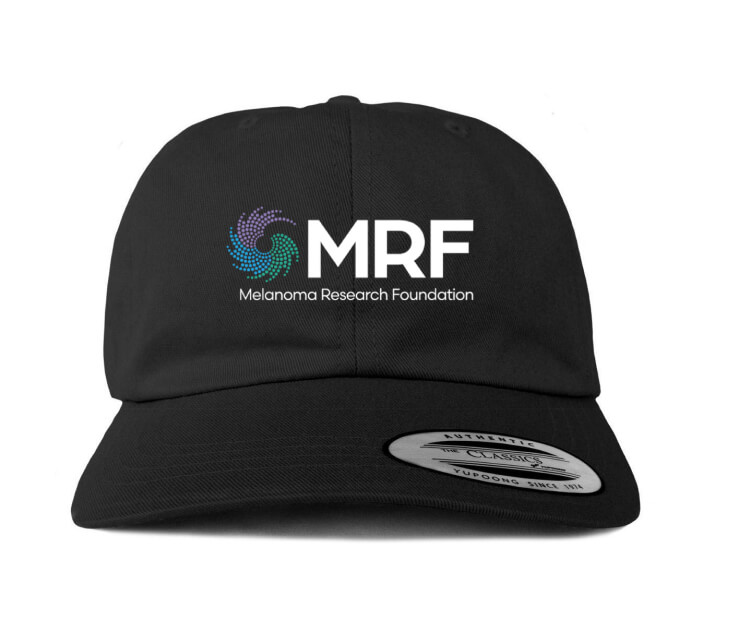Honoring Our Veterans by Protecting Their Health: The Hidden Risk of Melanoma

Guest Blog SUBMITTED BY
David Perez, BA and Rebecca I. Hartman, MD, MPH
By David Perez, BA, Georgetown University School of Medicine and Rebecca I. Hartman, MD, MPH, Professor of Dermatology, Brigham and Women’s Hospital and Harvard Medical School and member of the MRF Board of Directors
National data suggests Veterans are 1.7 times more likely to develop any skin cancer and 2.3 times more likely to develop melanoma, the deadliest form of skin cancer.1 Other risk factors including age, sex, race, ethnicity, area of residence and work-related exposures to toxic chemicals and radiation from flight, have also been associated with increased skin cancer risk among Veterans, most of whom are non-Hispanic White men, older than 65, and reside in rural areas with restricted access to healthcare.2-5 Although some studies have reported less use of sunscreen and shade as well as a lack of skin cancer risk knowledge in active duty service members,6 other studies have not replicated this finding in Veterans.1 Additionally, from 2009 and 2017, Veterans experienced slightly lower five-year melanoma survival rates than the general US population, although Veterans experienced a significant improvement in metastatic disease survival from 2015-2017, more so than the general population, possibly reflecting improved access and/or improved response to new treatments like immunotherapy.7-8 While new treatments such as immunotherapy have improved outcomes for Veterans with advanced melanoma, these treatments have high costs and potential side effects and not all patients respond, making efforts to reduce new cases of advanced melanoma critical in this high-risk population.8-9
Although the risk of any type of skin cancer is elevated among Veterans compared to the general population across age groups, fewer than one-third of Veterans report receiving a full-body skin exam.1,10 Research suggests that for Veterans, seeing a dermatologist regularly, approximately every 6 to 12 months, may be associated with earlier detection of melanoma, before it becomes thick and harder to treat.4 Other studies indicate that biannually screening non-Hispanic White males aged 60 years or older, including Veterans in this demographic population, may be cost-effective, but more research is needed to examine the effect of tailored skin cancer screening in Veterans on skin cancer outcomes.4,11
To reduce skin cancer risk in this population, potential strategies include raising awareness about sun protection, making sunscreen more available, and providing personalized medical treatments.12–14 Increasing access to dermatology care through teledermatology can also be useful, particularly for veterans in rural areas. Training primary care doctors to recognize concerning skin lesions would help ensure that Veterans receive timely care without needing dermatologic referrals and do not undergo unnecessary biopsies. Novel technologies may also improve the speed and access of skin cancer diagnoses, especially in rural populations.
Melanoma represents a preventable yet fatal risk to Veteran health, making it an urgent public health concern. To address the elevated risk of skin cancer among Veterans, public health initiatives should prioritize education, early detection and improved access to care. Ongoing research is needed to better understand the factors driving this risk and to identify effective strategies for preventing and treating skin cancers in this population.
References
- Rezaei, S. J., Kim, J., Onyeka, S., Swetter, S. M., Weinstock, M. A., Asch, S. M., & Linos, E. (2024). Skin Cancer and Other Dermatologic Conditions Among US Veterans. JAMA dermatology, 160(10), 1107–1111. https://doi.org/10.1001/jamadermatol.2024.3043
- Eibner, C., Krull, H., Brown, K. M., Cefalu, M., Mulcahy, A. W., Pollard, M., Shetty, K., Adamson, D. M., Amaral, E. F., Armour, P., Beleche, T., Bogdan, O., Hastings, J., Kapinos, K., Kress, A., Mendelsohn, J., Ross, R., Rutter, C. M., Weinick, R. M., Woods, D., … Farmer, C. M. (2016). Current and Projected Characteristics and Unique Health Care Needs of the Patient Population Served by the Department of Veterans Affairs. Rand health quarterly, 5(4), 13.
- Zullig, L. L., Sims, K. J., McNeil, R., Williams, C. D., Jackson, G. L., Provenzale, D., & Kelley, M. J. (2017). Cancer Incidence Among Patients of the U.S. Veterans Affairs Health Care System: 2010 Update. Military medicine, 182(7), e1883–e1891. https://doi.org/10.7205/MILMED-D-16-00371
- Hartman, R. I., La, J., Chang, M. S., Cheng, D., Do, N., Brophy, M., & Fillmore, N. R. (2021). Risk factors for thick melanoma among veterans: A cross-sectional study. Journal of the American Academy of Dermatology, 84(6), 1766–1769. https://doi.org/10.1016/j.jaad.2020.12.069
- Riemenschneider, K., Liu, J., & Powers, J. G. (2018). Skin cancer in the military: A systematic review of melanoma and nonmelanoma skin cancer incidence, prevention, and screening among active duty and veteran personnel. Journal of the American Academy of Dermatology, 78(6), 1185–1192. https://doi.org/10.1016/j.jaad.2017.11.062
- Powers, J. G., Patel, N. A., Powers, E. M., Mayer, J. E., Stricklin, G. P., & Geller, A. C. (2015). Skin Cancer Risk Factors and Preventative Behaviors among United States Military Veterans Deployed to Iraq and Afghanistan. The Journal of investigative dermatology, 135(11), 2871–2873. https://doi.org/10.1038/jid.2015.238
- Chang, M. S., La, J., Trepanowski, N., Cheng, D., Bihn, J. R., Do, N., Brophy, M., Fillmore, N. R., & Hartman, R. I. (2022). Increased relative proportions of advanced melanoma among veterans: A comparative analysis with the Surveillance, Epidemiology, and End Results registry. Journal of the American Academy of Dermatology, 87(1), 72–79. https://doi.org/10.1016/j.jaad.2022.02.063
- Jain, V., Hwang, W. T., Venigalla, S., Nead, K. T., Lukens, J. N., Mitchell, T. C., & Shabason, J. E. (2020). Association of Age with Efficacy of Immunotherapy in Metastatic Melanoma. The oncologist, 25(2), e381–e385. https://doi.org/10.1634/theoncologist.2019-0377
- Kugel, C. H., 3rd, Douglass, S. M., Webster, M. R., Kaur, A., Liu, Q., Yin, X., Weiss, S. A., Darvishian, F., Al-Rohil, R. N., Ndoye, A., Behera, R., Alicea, G. M., Ecker, B. L., Fane, M., Allegrezza, M. J., Svoronos, N., Kumar, V., Wang, D. Y., Somasundaram, R., Hu-Lieskovan, S., … Weeraratna, A. T. (2018). Age Correlates with Response to Anti-PD1, Reflecting Age-Related Differences in Intratumoral Effector and Regulatory T-Cell Populations. Clinical cancer research : an official journal of the American Association for Cancer Research, 24(21), 5347–5356. https://doi.org/10.1158/1078-0432.CCR-18-1116
- Coups, E. J., Xu, B., Heckman, C. J., Manne, S. L., & Stapleton, J. L. (2021). Physician skin cancer screening among U.S. military veterans: Results from the National Health Interview Survey. PloS one, 16(5), e0251785. https://doi.org/10.1371/journal.pone.0251785
- Adamson, A. S., Jarmul, J. A., & Pignone, M. P. (2020). Screening for Melanoma in Men: a Cost-Effectiveness Analysis. Journal of general internal medicine, 35(4), 1175–1181. https://doi.org/10.1007/s11606-019-05443-3
- Betancourt, J. A., Granados, P. S., Pacheco, G. J., Reagan, J., Shanmugam, R., Topinka, J. B., Beauvais, B. M., Ramamonjiarivelo, Z. H., & Fulton, L. V. (2021). Exploring Health Outcomes for U.S. Veterans Compared to Non-Veterans from 2003 to 2019. Healthcare (Basel, Switzerland), 9(5), 604. https://doi.org/10.3390/healthcare9050604
- Weinstock, M. A., Thwin, S. S., Siegel, J. A., Marcolivio, K., Means, A. D., Leader, N. F., Shaw, F. M., Hogan, D., Eilers, D., Swetter, S. M., Chen, S. C., Jacob, S. E., Warshaw, E. M., Stricklin, G. P., Dellavalle, R. P., Sidhu-Malik, N., Konnikov, N., Werth, V. P., Keri, J. E., Robinson-Bostom, L., … Veterans Affairs Keratinocyte Carcinoma Chemoprevention Trial (VAKCC) Group (2018). Chemoprevention of Basal and Squamous Cell Carcinoma With a Single Course of Fluorouracil, 5%, Cream: A Randomized Clinical Trial. JAMA dermatology, 154(2), 167–174. https://doi.org/10.1001/jamadermatol.2017.3631
Rosenberg, A. R., Tabacchi, M., Ngo, K. H., Wallendorf, M., Rosman, I. S., Cornelius, L. A., & Demehri, S. (2019). Skin cancer precursor immunotherapy for squamous cell carcinoma prevention. JCI insight, 4(6), e125476. https://doi.org/10.1172/jci.insight.125476




